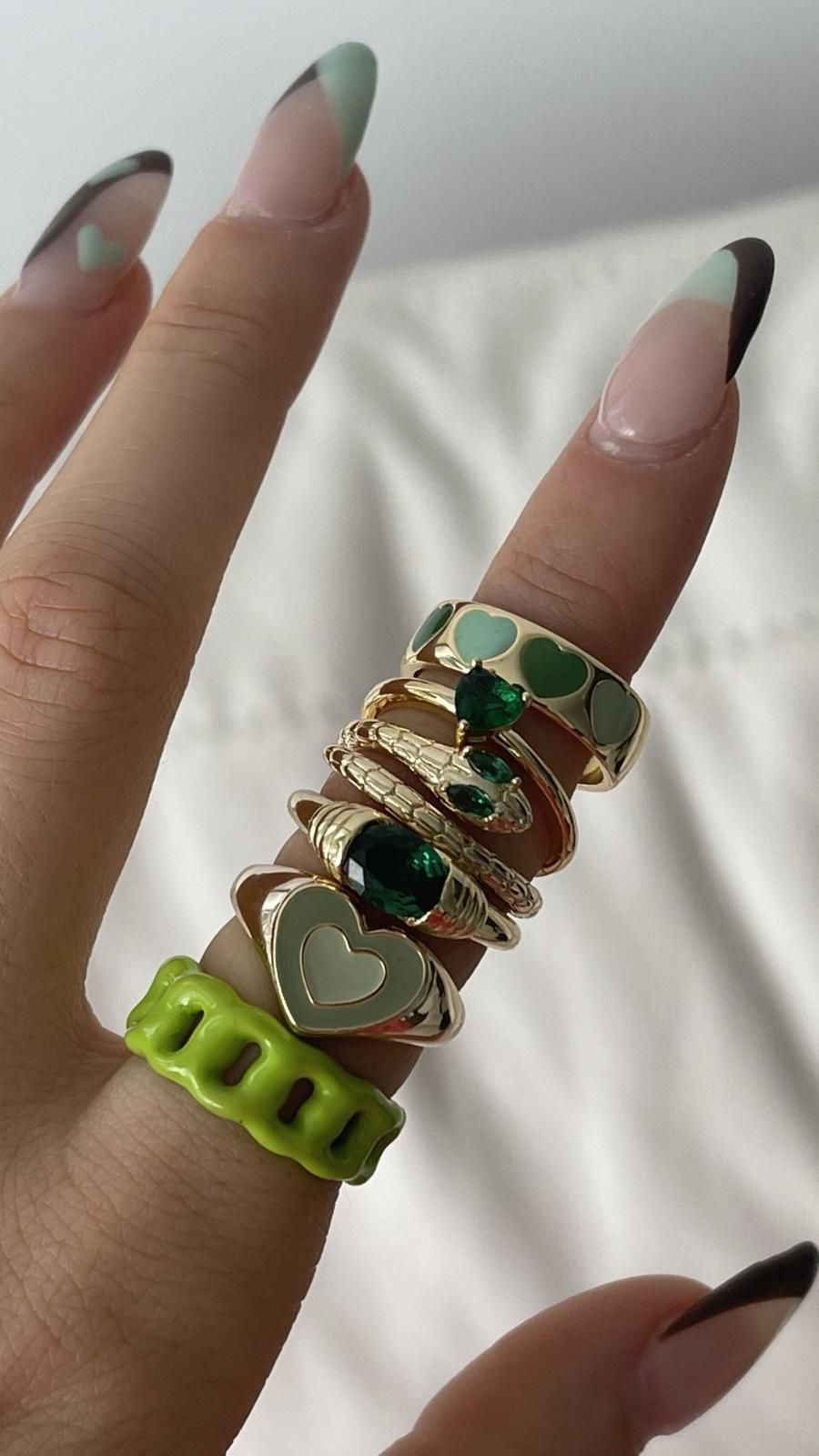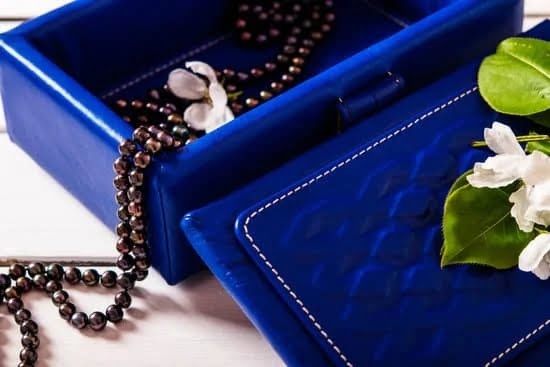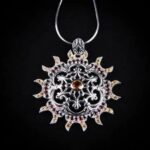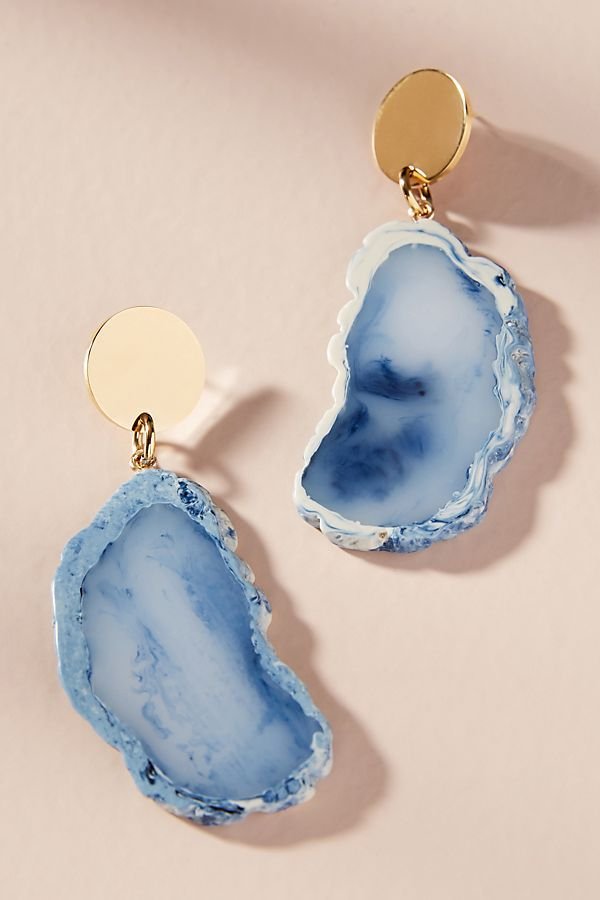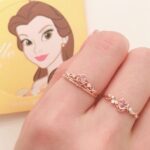Diamonds have long been a symbol of luxury, beauty, and eternal love. From engagement rings to dazzling necklaces, diamonds hold a special place in the world of jewelry. But just how significant are diamonds in the realm of adornment? This article delves into the percentage of diamonds that are used for jewelry, shedding light on their role and importance in the industry.
The allure of diamonds stems not only from their innate rareness but also from their desirability. These precious gemstones captivate our attention with their exceptional sparkle and brilliance. Their rarity adds to their cachet, making them highly sought after by collectors and connoisseurs alike. Understanding the importance of diamonds in jewelry requires exploring both their scarcity and the fervent desire they evoke.
To truly appreciate the significance of diamonds in jewelry, it is essential to uncover the journey these gemstones undertake before adorning our fingers or necks. From deep within mines around the world, diamonds embark on an extraordinary voyage. They pass through countless hands along the supply chain – miners, cutters, polishers, wholesalers – until they finally reach reputable jewelry stores ready to be set into stunning pieces.
As we explore the percentage of diamonds used for jewelry, it becomes clear that their role extends beyond just adorning our bodies. Diamonds have found various applications in industries such as technology, medicine, and manufacturing due to their remarkable properties. Nevertheless, their connection with jewelry remains strong, fueled not just by tradition but also by evolving trends in fashion and personal style.
Intriguing questions arise: What factors influence this distribution? How do global market dynamics impact diamond allocation for jewelry? What are the environmental implications of extracting these precious stones? Exploring these facets will allow us to gain a comprehensive understanding of why diamonds continue to capture our imagination and adorn our bodies with sparkling magnificence.
The Rarity and Desirability of Diamonds
Diamonds hold a special place in the world of jewelry due to their rarity and desirability. These precious gemstones have captivated humans for centuries, symbolizing love, wealth, and luxury. In this section, we will delve into the factors that make diamonds so rare and desirable.
One key aspect of the diamond’s allure is its scarcity. Diamonds are formed deep within the Earth’s mantle under intense pressure and heat over billions of years. The conditions required for their creation are extremely rare, making diamonds one of the rarest gemstones on Earth. Additionally, the process of bringing diamonds from deep within the Earth to the surface is a geologically complex phenomenon, further contributing to their scarcity.
The unique properties possessed by diamonds also contribute to their desirability. They are renowned for their remarkable brilliance, fire, and luster – qualities that make them highly desirable for use in jewelry. The way light dances through a diamond creates a mesmerizing sparkle that is unmatched by any other gemstone.
Additionally, diamonds are known for their exceptional hardness – they are the hardest natural substance known to man. This durability ensures that diamond jewelry retains its beauty and value over time, adding to its desirability.
Unveiling the Diamond’s Journey
When we admire a beautiful diamond in a piece of jewelry, it is easy to forget the long and complex journey that brought that diamond from the mine to the jewelry store. Understanding this journey can give us a greater appreciation for the rarity and value of diamonds.
Diamonds are formed deep within the Earth’s mantle under high pressure and temperature conditions. They are then brought to the surface by volcanic eruptions, where they can be found in primary deposits known as kimberlite pipes or secondary deposits like riverbeds. The extraction process involves either open-pit mining or underground mining, depending on the depth and accessibility of the deposit.
Once extracted, diamonds go through several stages of processing. They are sorted according to their size, color, clarity, and shape. Rough diamonds are then cut and polished to enhance their brilliance and fire. This process requires skillful craftsmanship and precision.
After being cut and polished, diamonds go through grading and certification by reputable gemological laboratories such as the Gemological Institute of America (GIA) or the International Gemological Institute (IGI). These certifications ensure that diamonds meet certain quality standards and provide valuable information about their characteristics.
Finally, the journey leads diamonds to jewelry manufacturers who design and create stunning pieces incorporating these precious gems. Rings, necklaces, earrings, bracelets – these are just some examples of how diamonds can be incorporated into jewelry designs. The final products are then delivered to jewelry stores around the world for consumers to admire and purchase.
Throughout this entire journey, it is estimated that only a small portion of all mined diamonds end up being used for jewelry purposes. According to industry experts, approximately 30-40% of all mined diamonds find their way into jewelry production. The remaining percentage is allocated for industrial applications such as cutting tools, abrasives, high-pressure experiments, and more.
Understanding this allocation is crucial in order to grasp the rarity and value of diamonds used in jewelry. It also highlights the importance of sustainable practices in diamond mining to ensure the long-term availability of these precious gemstones for both industrial and jewelry purposes.
| Allocation | Percentage |
|---|---|
| Jewelry | 30-40% |
| Industrial Applications | 60-70% |
Untapped Potential
Diamonds are not only prized for their beauty and sparkle, but they also possess unique physical properties that make them highly valuable in various industrial applications. In this section, we will explore the untapped potential of diamonds in industries beyond jewelry and delve into how they are utilized.
One of the main areas where diamonds find extensive use is in cutting and polishing tools. Due to their exceptional hardness, diamonds are perfect for precision cutting. Diamond-tipped blades and drills are employed in industries such as construction, mining, and manufacturing to cut through hard materials like concrete, stone, and metal. The use of diamond tools results in higher efficiency, lower maintenance costs, and improved quality of finished products.
Diamonds also play a vital role in the electronics industry. As semiconductors continue to shrink in size, the need for more durable materials grows. Diamonds have excellent thermal conductivity and electrical insulating properties which make them well-suited for use as heat sinks or as protective coatings on electronic devices. The integration of diamonds into electronics helps improve their performance by dissipating heat efficiently and preventing damage from high temperatures.
Furthermore, the medical field benefits greatly from diamonds’ biocompatibility and extreme hardness. Synthetic diamonds are used to create surgical instruments like scalpels and drills that can provide unparalleled precision during procedures. Additionally, diamond-coated implants have shown great promise in improving the success rate of surgeries due to their compatibility with human tissues and resistance to wear.
| Industrial Application | Description |
|---|---|
| Cutting Tools | Diamond-tipped blades and drills are used in construction, mining, and manufacturing industries for precision cutting through hard materials. |
| Electronics | Diamonds are employed as heat sinks and protective coatings in electronic devices to dissipate heat efficiently and improve performance. |
| Medical | Synthetic diamonds are used to create surgical instruments and diamond-coated implants that offer precision and compatibility with human tissues. |
Understanding the Global Diamond Market
The global diamond market is a complex network of supply and demand dynamics that play a crucial role in determining the percentage of diamonds used for jewelry. This section will delve into the factors that influence these dynamics and provide insights into how they impact the allocation of diamonds for jewelry.
1. Economic Factors:
One of the key drivers of diamond demand is the overall economic health of a country or region. When economies are thriving, consumers have more disposable income to spend on luxury items, such as diamond jewelry. On the other hand, during periods of economic downturn or recession, people tend to cut back on non-essential purchases, impacting diamond demand.
2. Cultural Significance:
Cultural traditions and preferences also play a significant role in shaping diamond consumption for jewelry. In many cultures, diamonds hold symbolic value and are considered essential for special occasions like engagements and weddings. The extent to which these cultural sentiments are upheld can greatly influence the percentage of diamonds used for jewelry.
3. Fashion Trends:
Fashion trends have a profound impact on consumer preferences when it comes to diamond jewelry. Designers, celebrities, and influencers help shape these trends by showcasing unique designs and styles, driving demand for certain types of diamonds. As fashion evolves over time, so do consumer preferences, leading to changes in the allocation of diamonds for jewelry production.
To better understand the global diamond market’s supply and demand dynamics, it is important to analyze data and statistics related to diamond production and consumption worldwide. This involves looking at factors such as mining output, sales volumes in different regions, fluctuations in prices over time, and changes in consumer behavior patterns.
Sources:
– “The Global Diamond Report 2020” by Bain & Company and the Antwerp World Diamond Centre.
The Role of Jewelry in Diamond Consumption
Diamonds have long been associated with luxury and elegance, making them a popular choice for jewelry. In this section, we will delve into the role of jewelry in diamond consumption, exploring the traditions and trends that drive the demand for these precious gemstones.
Traditions that Drive Diamond Jewelry Demand
Throughout history, diamonds have held a special place in various cultures around the world. From engagement rings to anniversary gifts, diamonds are often used to symbolize love, commitment, and celebration. The tradition of giving diamond jewelry as a token of affection has been ingrained in society for centuries.
One such tradition is the diamond engagement ring. Since De Beers introduced its famous “A Diamond is Forever” campaign in 1947, diamond engagement rings have become synonymous with proposals and marriage. This marketing effort successfully ingrained the idea that a diamond is an essential part of a meaningful proposal and forever bonds between couples.
Another tradition that drives diamond jewelry demand is gifting for special occasions such as birthdays, anniversaries, or milestones. Diamonds are seen as luxurious and timeless gifts that can be cherished for a lifetime. Whether it’s a simple pendant necklace or an elaborate pair of diamond earrings, these pieces of jewelry hold sentimental value and signify important moments in one’s life.
Trends Influencing Diamond Jewelry Consumption
In addition to traditions, current trends also play a significant role in driving diamond jewelry consumption. As fashion trends evolve, so do people’s preferences when it comes to their accessories.
One trend that has gained popularity over the years is personalized jewelry. People are increasingly seeking unique pieces that reflect their individuality and personal style. This trend has created opportunities for custom-made diamond jewelry, where customers can choose everything from the shape and cut of the diamond to the design of the setting.
Another trend influencing diamond jewelry consumption is the growing demand for ethically sourced and sustainable diamonds. As consumers become more conscious of their environmental impact and ethical considerations, they are seeking out diamonds that have been mined and crafted in an environmentally and socially responsible manner. This trend has led to the rise of lab-grown diamonds, which are created in a laboratory without the need for mining.
Breaking Down the Numbers
The Dominance of Jewelry in Diamond Allocation
When it comes to diamonds, the vast majority of them are allocated for use in jewelry. In fact, according to statistical analysis, approximately 90% of all diamonds mined globally are destined to be transformed into exquisite pieces of jewelry. This percentage clearly highlights the significant role that the jewelry industry plays in diamond consumption.
Exploring Regional Variations
While jewelry accounts for a substantial portion of diamond usage worldwide, it’s important to note that there are regional variations in this allocation. For instance, in developed countries such as the United States and Western Europe, where the tradition of giving diamond engagement rings is deeply ingrained, a higher percentage of diamonds are used for jewelry compared to other parts of the world.
On the other hand, developing nations might allocate a smaller proportion of diamonds for jewelry due to factors such as limited purchasing power or cultural preferences that prioritize other uses.
Changes Over Time
The percentage of diamonds used for jewelry has also exhibited some notable changes over time. In recent years, there has been a shift towards increased demand for diamonds in emerging markets such as China and India. As these economies continue to grow and more consumers gain access to disposable income, the demand for diamond jewelry is expected to rise significantly. This could have implications on the overall allocation of diamonds for jewelry purposes globally.
Overall, while exact figures may vary year by year and region by region, it is clear that a substantial proportion of diamonds goes into creating breathtaking pieces of jewelry. From stunning engagement rings to elegant necklaces and bracelets, diamonds continue to capture both our hearts and our imaginations in the realm of fine jewelry.
Factors Influencing the Percentage of Diamonds Used for Jewelry
The percentage of diamonds used for jewelry is influenced by several factors that shape the global diamond market. These factors determine how much of the world’s diamond production ultimately ends up in the form of exquisite jewelry pieces. Let’s explore some of the key factors that play a significant role in this allocation.
- Diamond Quality: One of the primary factors influencing the use of diamonds for jewelry is their quality. Gem-quality diamonds, which boast exceptional clarity, color, and cut, are highly sought after for their beauty and sparkle. These diamonds are more likely to be used in high-end jewelry pieces such as engagement rings, earrings, and necklaces. On the other hand, diamonds with lower qualities may be designated for industrial applications or other lower-value uses.
- Market Demand: The demand for diamond jewelry also greatly influences how many diamonds are allocated to this sector. Consumer preferences and trends play a crucial role in shaping this demand. For example, if there is a surge in popularity for specific diamond cuts or styles, jewelers will need to source more diamonds to meet the market’s demands. Likewise, economic conditions and consumer purchasing power also impact the overall demand for diamond jewelry.
- Availability of Alternative Uses: Although diamonds have long been associated with luxury adornment, they possess various unique properties that make them valuable in industrial applications as well. Synthetic diamonds or lower-grade stones can be utilized in manufacturing tools, abrasives, and even high-tech applications like laser technology. Therefore, when these alternative uses have a higher economic value compared to using them in jewelry, fewer diamonds may be allocated towards that purpose.
It is important to recognize that these factors interact with each other dynamically and vary over time due to changing market conditions and consumer preferences. This constant interplay between quality, demand, and alternative uses ultimately determines what percentage of diamonds end up adorning our fingers and necks as breathtaking pieces of jewelry.
The Environmental Implications
Protecting the Environment in Diamond Extraction
Diamond extraction is an intricate process that often occurs in environmentally sensitive areas. From open-pit mines to underground tunnels and underwater operations, the extraction of diamonds can have significant environmental implications. However, in recent years, there has been a growing emphasis on implementing sustainable practices in diamond extraction to minimize the impact on the environment.
Regulations and Certification Systems
One way that the diamond industry has been working toward sustainable practices is through regulations and certification systems. The Kimberly Process Certification Scheme (KPCS) is one such initiative that was established in 2003 with the goal of preventing conflict diamonds from entering the global market. The KPCS sets requirements for government authorities, trade participants, and civil society to ensure that diamonds are sourced responsibly and ethically.
Additionally, organizations like the Responsible Jewellery Council (RJC) have implemented standards for responsible business practices throughout the jewelry supply chain. The RJC’s Code of Practices covers various aspects of sustainability, including environmental management, social responsibility, and ethical sourcing. By adhering to these standards and obtaining certification from recognized bodies like the RJC, diamond companies demonstrate their commitment to sustainable practices.
Innovations in Sustainable Mining
In recent years, there have also been advancements in technology and innovations aiming to reduce the environmental impact of diamond mining. For example, some companies are using state-of-the-art machinery and equipment designed to minimize soil erosion and prevent water pollution during mining operations. Additionally, advancements in wastewater treatment systems allow for better management of chemical pollutants generated during diamond extraction processes.
Furthermore, efforts are being made to rehabilitate land after mining activities have ceased. This involves restoring vegetation cover and creating sustainable land use options that benefit local communities and preserve biodiversity. Companies are increasingly recognizing the importance of post-mining site reclamation as a crucial aspect of sustainable diamond extraction.
The Future of Diamonds
The future of diamonds holds great potential for innovative uses and technological advancements. While diamonds have long been valued for their beauty and brilliance in jewelry, they also possess unique properties that make them valuable in various other industries.
One area of innovation is the use of diamonds in technology, particularly in electronics. Diamonds have exceptional thermal conductivity and can withstand extremely high temperatures, making them ideal for use in computer chips and other electronic components. Additionally, diamond coatings can enhance the performance and durability of tools and machinery, offering significant advantages in fields such as aerospace and manufacturing.
Another emerging trend is the use of lab-grown diamonds in various industries. Lab-grown diamonds are created through a process that replicates the conditions under which natural diamonds are formed. These synthetic alternatives offer a more sustainable and ethical option compared to traditional mining practices. They are also increasingly being used in industries such as optics, medicine, and even quantum computing.
Innovations in diamond cutting and polishing techniques are also driving change within the industry. Advanced technologies enable gemologists to maximize a diamond’s brilliance by refining its shape and creating intricate cuts. This allows for greater customization options for consumers, as well as the creation of unique jewelry pieces with unparalleled sparkle.
| Innovation | Application |
|---|---|
| Diamond coating | Aerospace industry |
| Lab-grown diamonds | Optics industry |
| Diamond-infused drill bits | Mining industry |
As technology continues to advance, new possibilities for diamond applications will likely arise. From cutting-edge medical devices to breakthroughs in renewable energy, the future holds exciting prospects for diamonds beyond their traditional role in jewelry. With ongoing research and development, the full potential of diamonds can be harnessed, benefitting multiple industries and contributing to a more sustainable and innovative future.
Conclusion
In conclusion, the journey of diamonds from mine to jewelry store is a fascinating one that highlights the magnificence and rarity of these precious gemstones. While diamonds have found various industrial applications, their association with jewelry remains incredibly significant. When analyzing the statistics of diamond allocation for jewelry purposes, it becomes evident that a substantial percentage of diamonds are indeed used in the production of exquisite jewelry pieces.
The global diamond market is influenced by complex supply and demand dynamics, where jewelry plays a pivotal role in consumption. Tradition and trends both factor into the decision to use diamonds in jewelry, as individuals continue to celebrate special occasions and milestones with these timeless gems. Moreover, factors such as cultural preferences, societal norms, economic conditions, and marketing efforts all contribute to the percentage of diamonds allocated for jewelry.
It is important to consider the environmental implications surrounding diamond extraction and ensure sustainable practices are implemented. As consumers become more environmentally conscious, the demand for ethically sourced and sustainable diamonds grows. This shift towards responsible mining practices not only benefits the ecosystem but also enhances the appeal of diamond jewelry among conscientious buyers.
Looking to the future, innovative uses and technological advancements present exciting possibilities for diamond utilization beyond traditional jewelry applications. From incorporating diamonds into high-tech gadgets to exploring new avenues in fashion design, diamonds are sure to remain an integral part of our lives.
Ultimately, the sparkling world of diamond jewelry continues to capture hearts across generations. The allure and symbolism associated with these precious gems make them truly timeless treasures that will always be adored for their beauty and brilliance.
Frequently Asked Questions
What percentage of diamond is used in jewellery?
The percentage of diamond used in jewelry varies depending on the specific type of jewelry. In general, diamond is commonly used in various forms such as solitaire rings, earrings, necklaces, and bracelets for adornment purposes. High-quality diamonds with desirable characteristics like clarity and color are often preferred for jewelry pieces, as they enhance their beauty and value.
However, it is important to note that not all diamonds are suitable for jewelry due to their quality or size limitations. Thus, while there isn’t an exact percentage that can be applied universally, it can be said that a significant portion of diamonds is indeed utilized in the creation of jewelry.
What percentage of diamonds are used?
Diamonds have diverse applications beyond jewelry, including industrial uses. While it is challenging to estimate an exact percentage due to fluctuations in market demands and global usage trends, a substantial proportion of diamonds are undoubtedly utilized outside of the realm of traditional jewelry-making.
Industrial-grade diamonds known as “industrial diamonds” or “diamond grit” are employed in various industries for cutting, grinding, drilling, or polishing hard materials like metal or stone. These industrial applications make use of smaller non-gem quality diamonds that may not meet the criteria required for fine jewelry production.
Are most diamonds used for jewelry?
While diamond has become synonymous with luxury and beauty in the context of jewelry, it does not account for the majority of diamond usage overall. The demand and consumption patterns vary between industrial applications and gemstone-oriented sectors such as jewelry manufacturing.
While it’s challenging to provide an accurate breakdown without detailed statistical data, it can be inferred that most diamonds mined globally are primarily used for industrial purposes rather than being incorporated into traditional or high-end jewelry pieces alone.

Welcome to my jewelry blog! My name is Sarah and I am the owner of this blog.
I love making jewelry and sharing my creations with others.
So whether you’re someone who loves wearing jewelry yourself or simply enjoys learning about it, be sure to check out my blog for insightful posts on everything related to this exciting topic!

